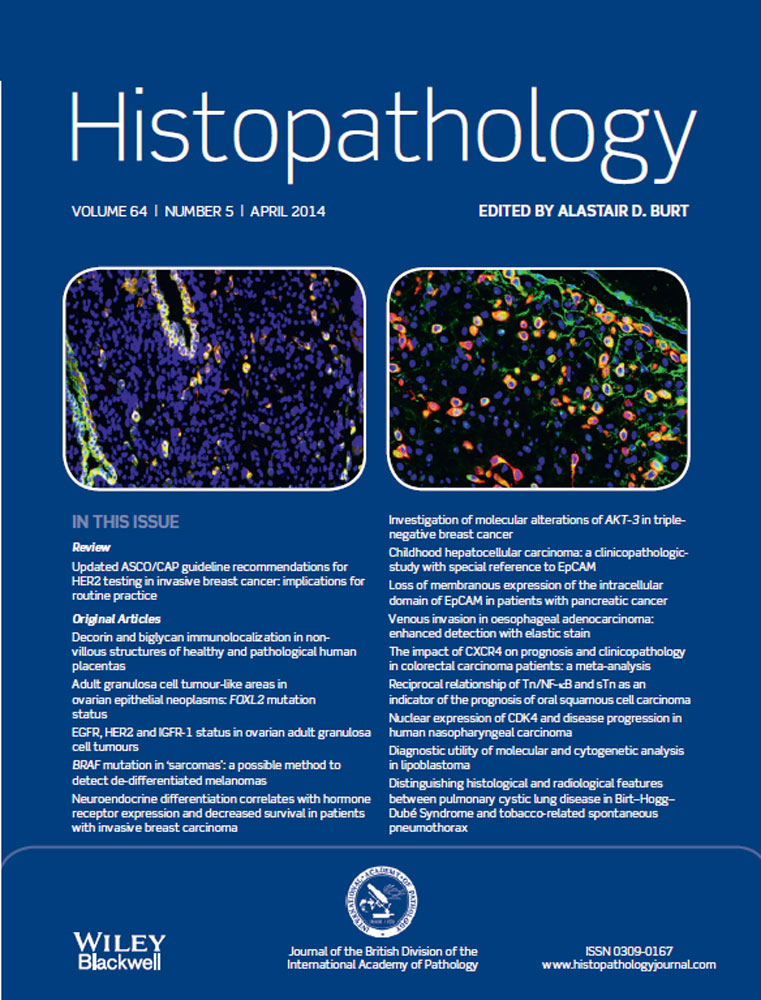Epidermal growth factor receptor (EGFR), HER2 and insulin-like growth factor-1 receptor (IGF-1R) status in ovarian adult granulosa cell tumours
Abstract
Aims
Adult granulosa cell tumours (AGCTs) are uncommon ovarian sex cord–stromal tumours which recur following surgical removal in up to 50% of patients. Treatment options for recurrent and advanced stage AGCTs are limited, with poor response to chemotherapy and radiotherapy. We aimed to assess epidermal growth factor receptor (EGFR), HER2 and insulin-like growth factor-1 receptor (IGF-1R) status in AGCTs with a view to investigating whether or not these receptors might be potential therapeutic targets in these neoplasms.
Methods and results
Immunohistochemical staining for EGFR, HER2 and IGF-1R was undertaken in 31 AGCTs. Tumour DNA was also analysed for mutations in the tyrosine kinase domain of EGFR (exons 18–21) by Cobas mutation RT–PCR. Twenty-three of 31 (74%) AGCTs showed some degree of EGFR expression, generally with cytoplasmic or mixed membranous and cytoplasmic staining of variable intensity. Eleven of 27 (41%) cases exhibited strong membranous and cytoplasmic expression of IGF-1R. HER2 expression was not seen. No mutations were found in exons 18–21 of the EGFR gene in hot-spots of therapeutic relevance.
Conclusions
This study raises the possibility that anti-EGFR and/or anti-IGF-1R therapies may be of potential benefit in ovarian AGCTs, and this requires further study. Lack of known mutations within the tyrosine kinase domain of EGFR suggests that EGFR-related tyrosine kinase inhibitors may not be useful therapeutically.




